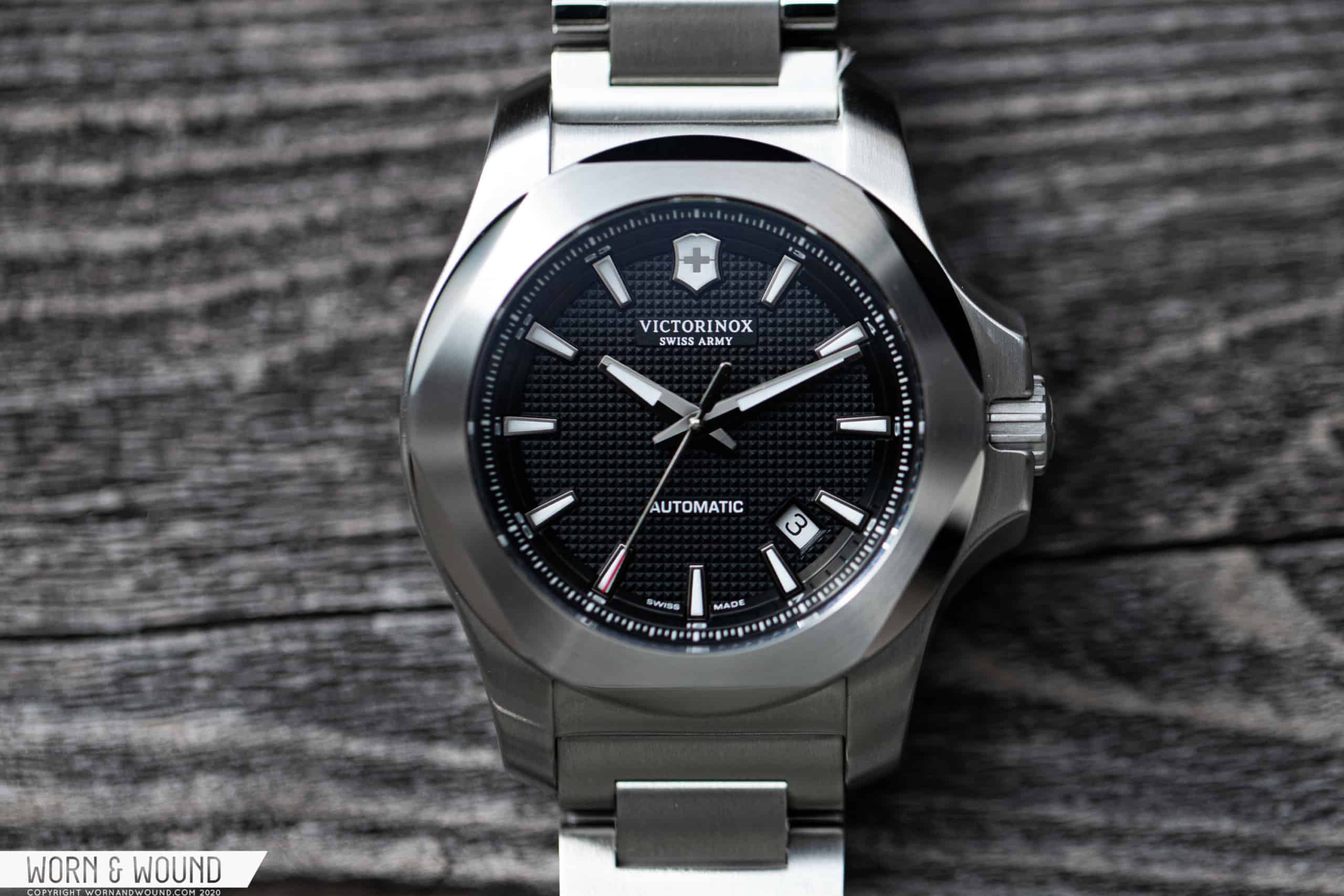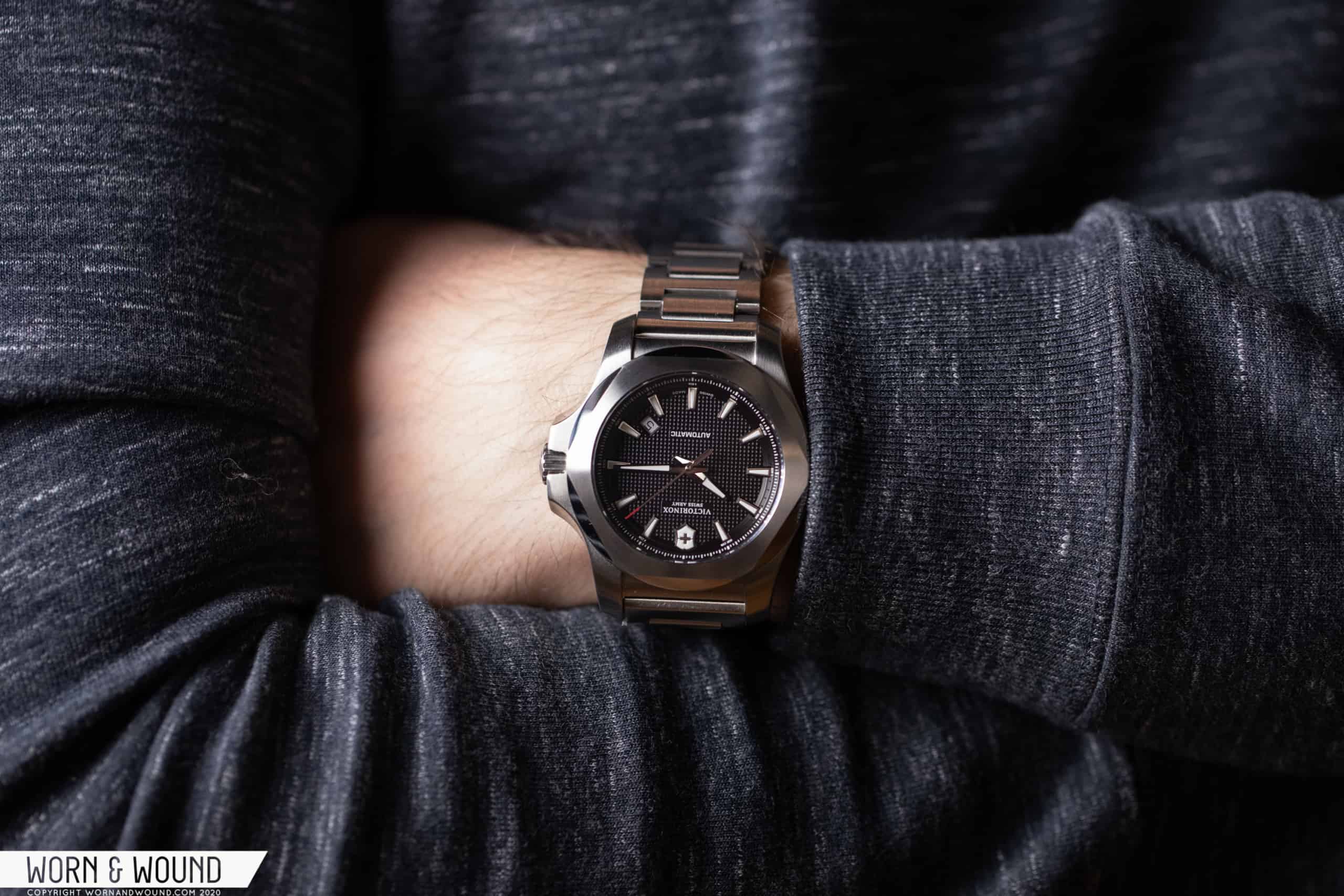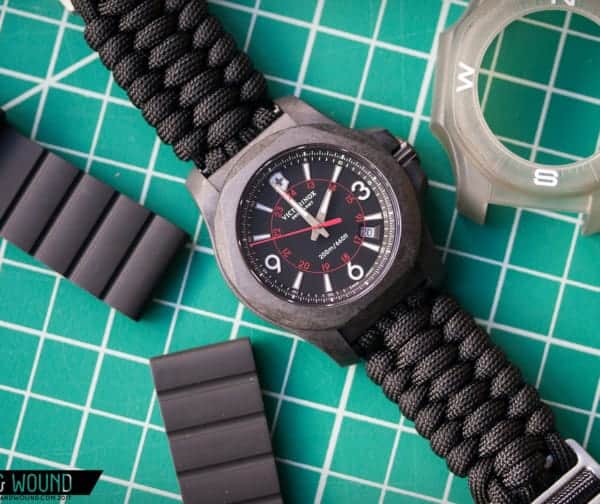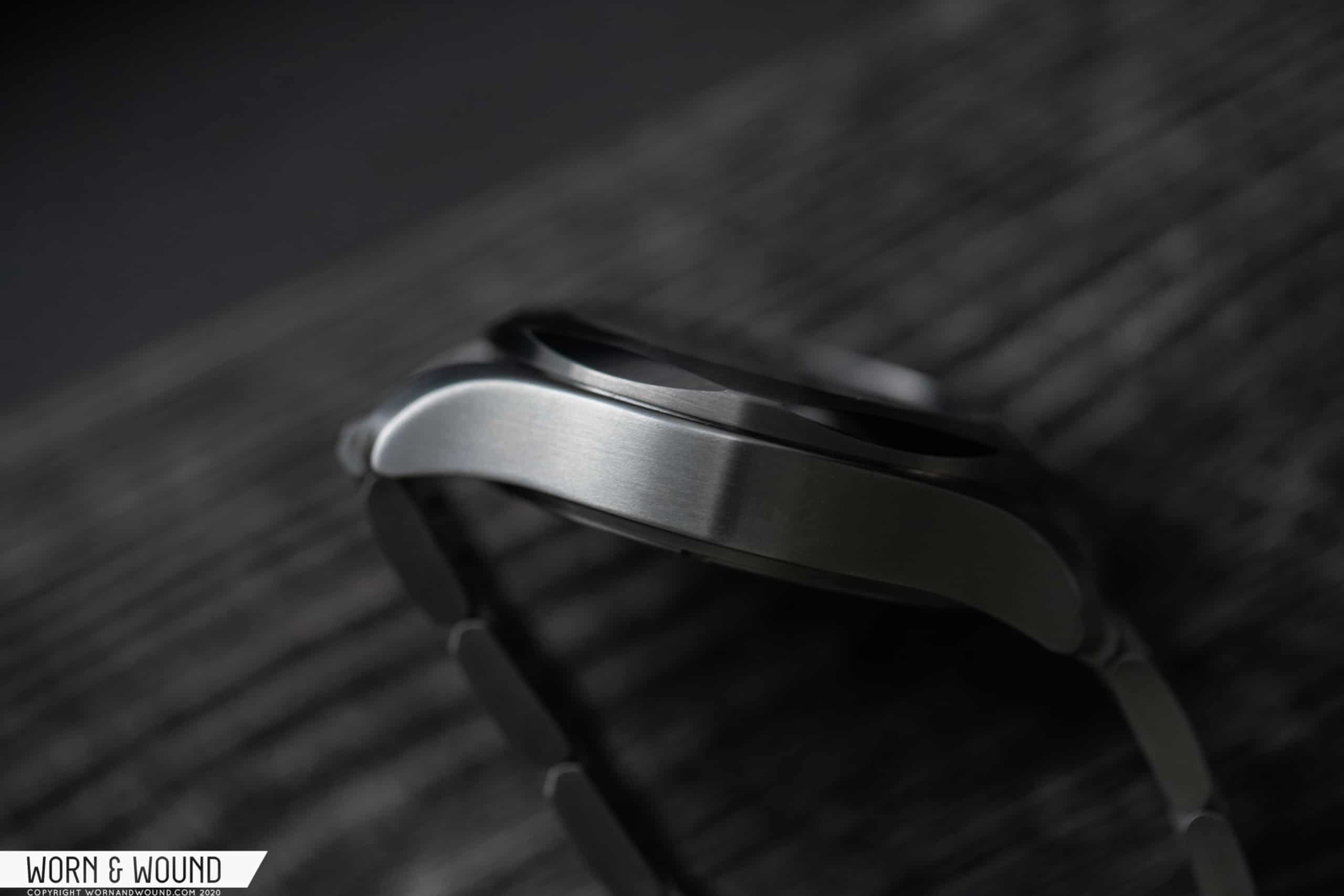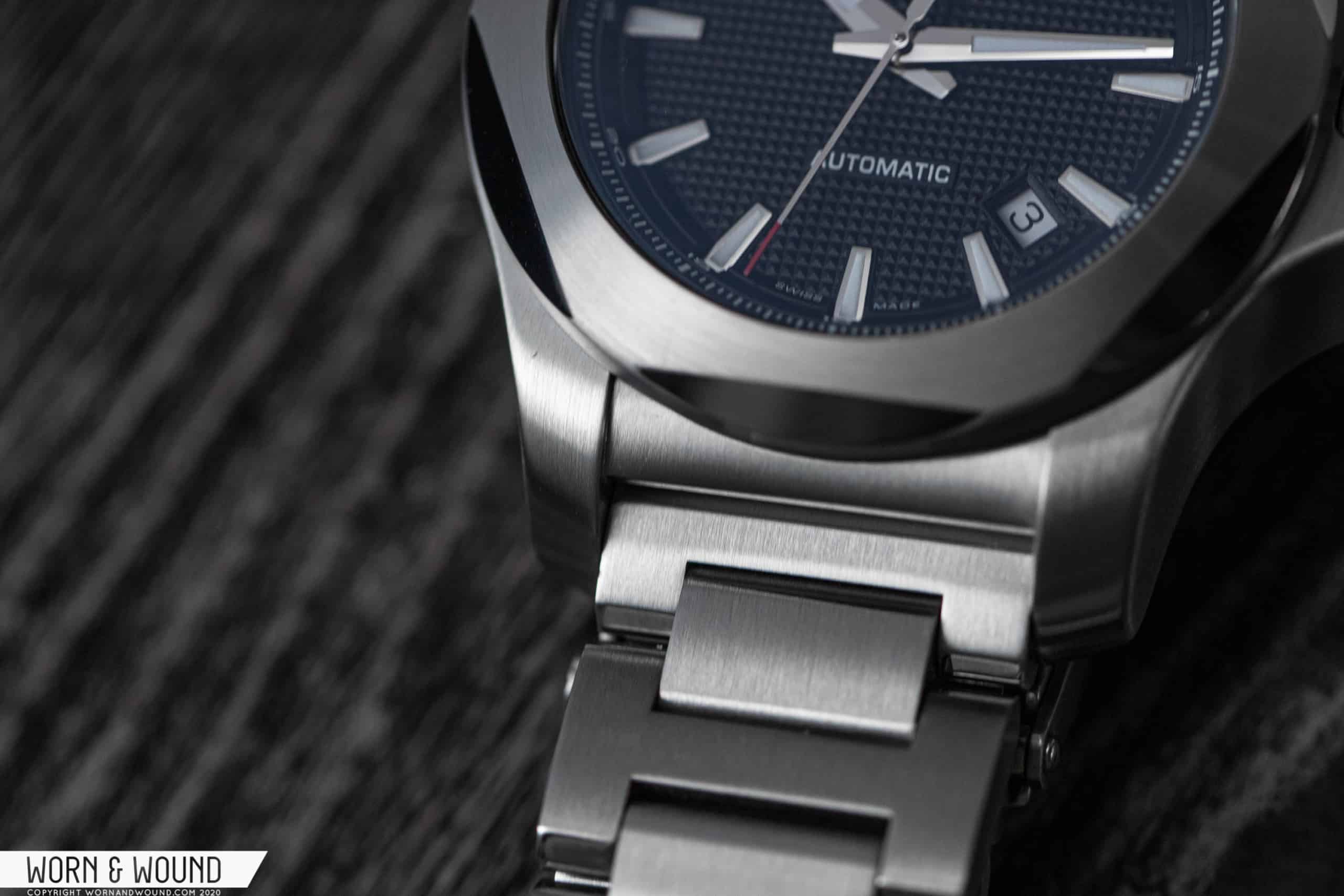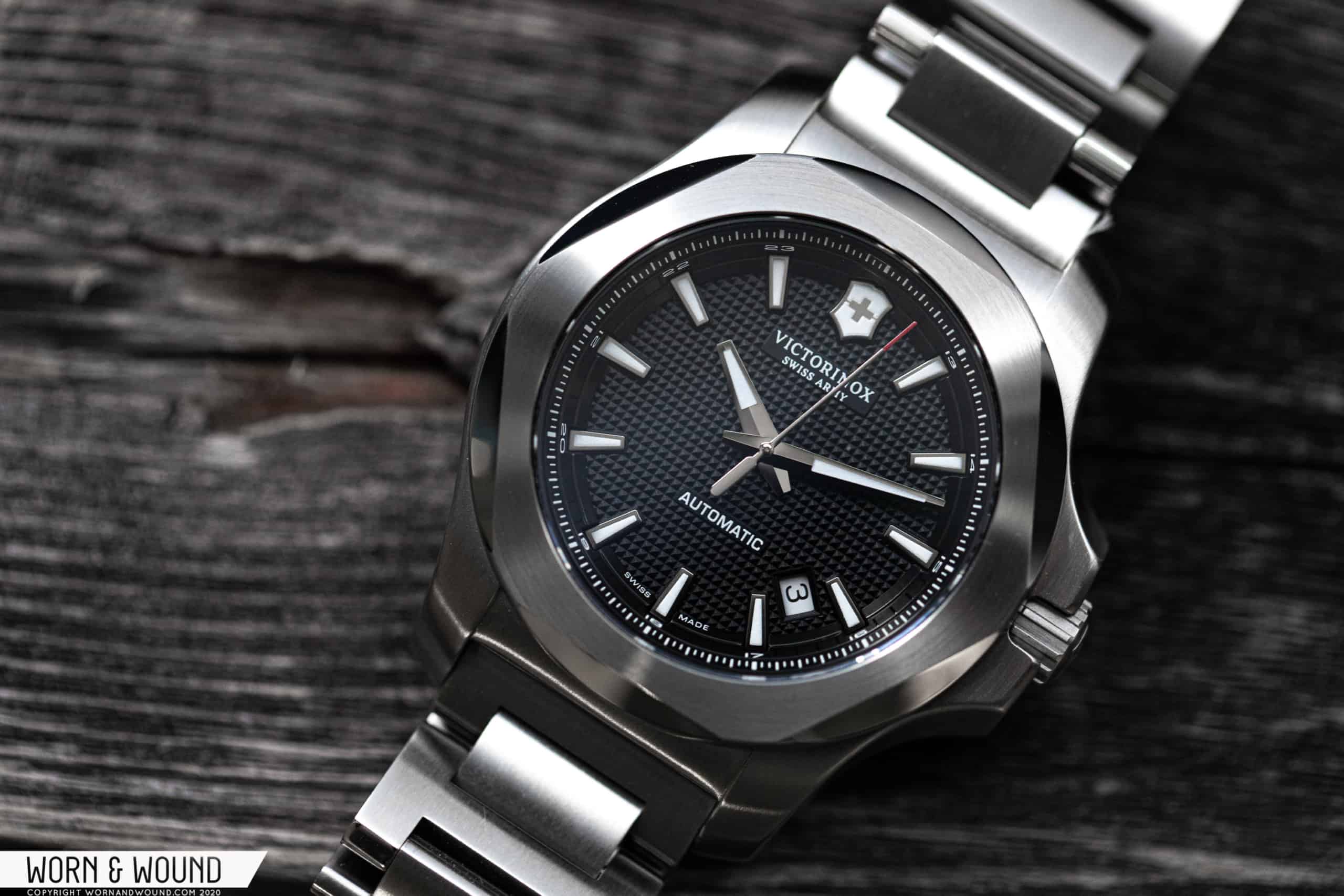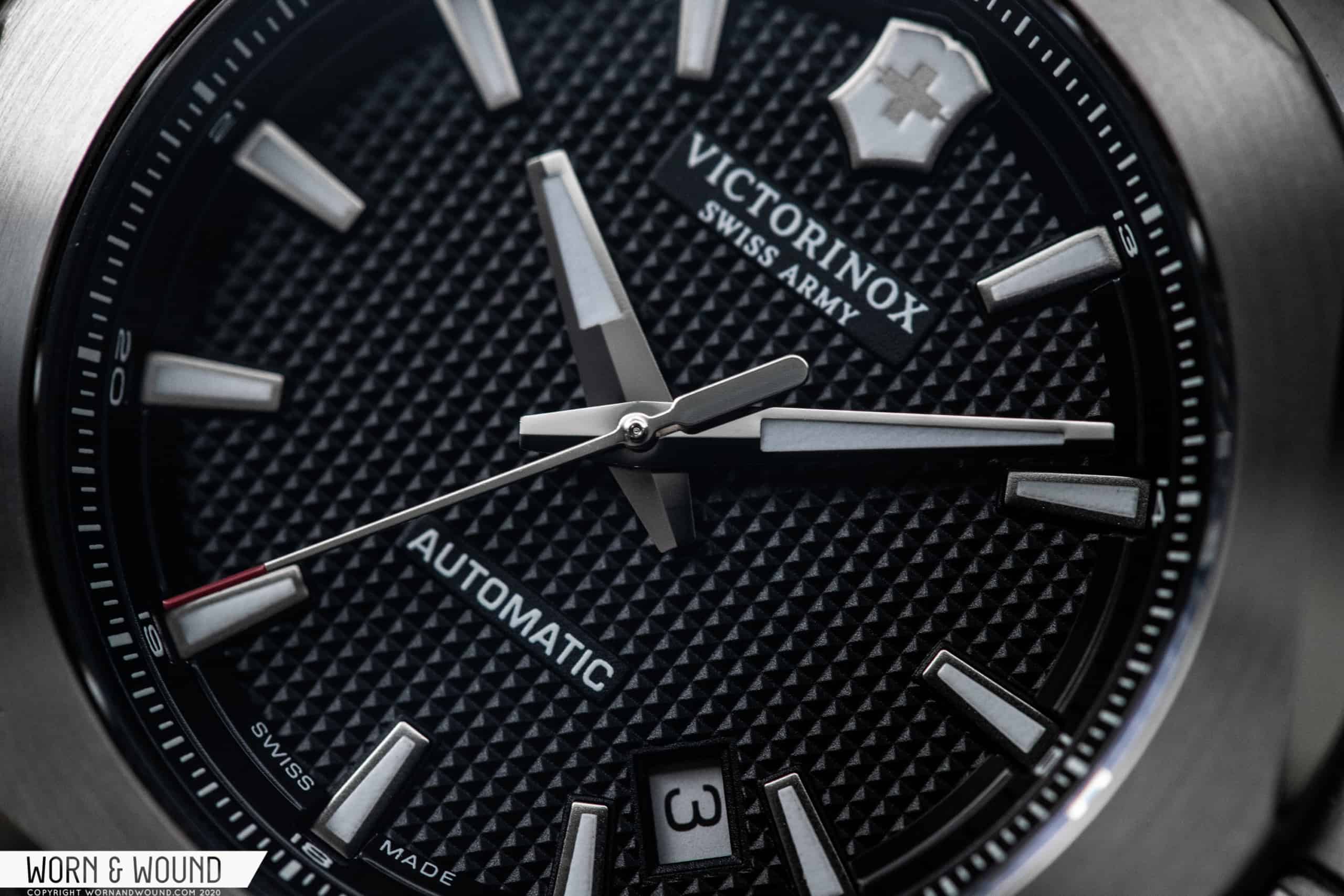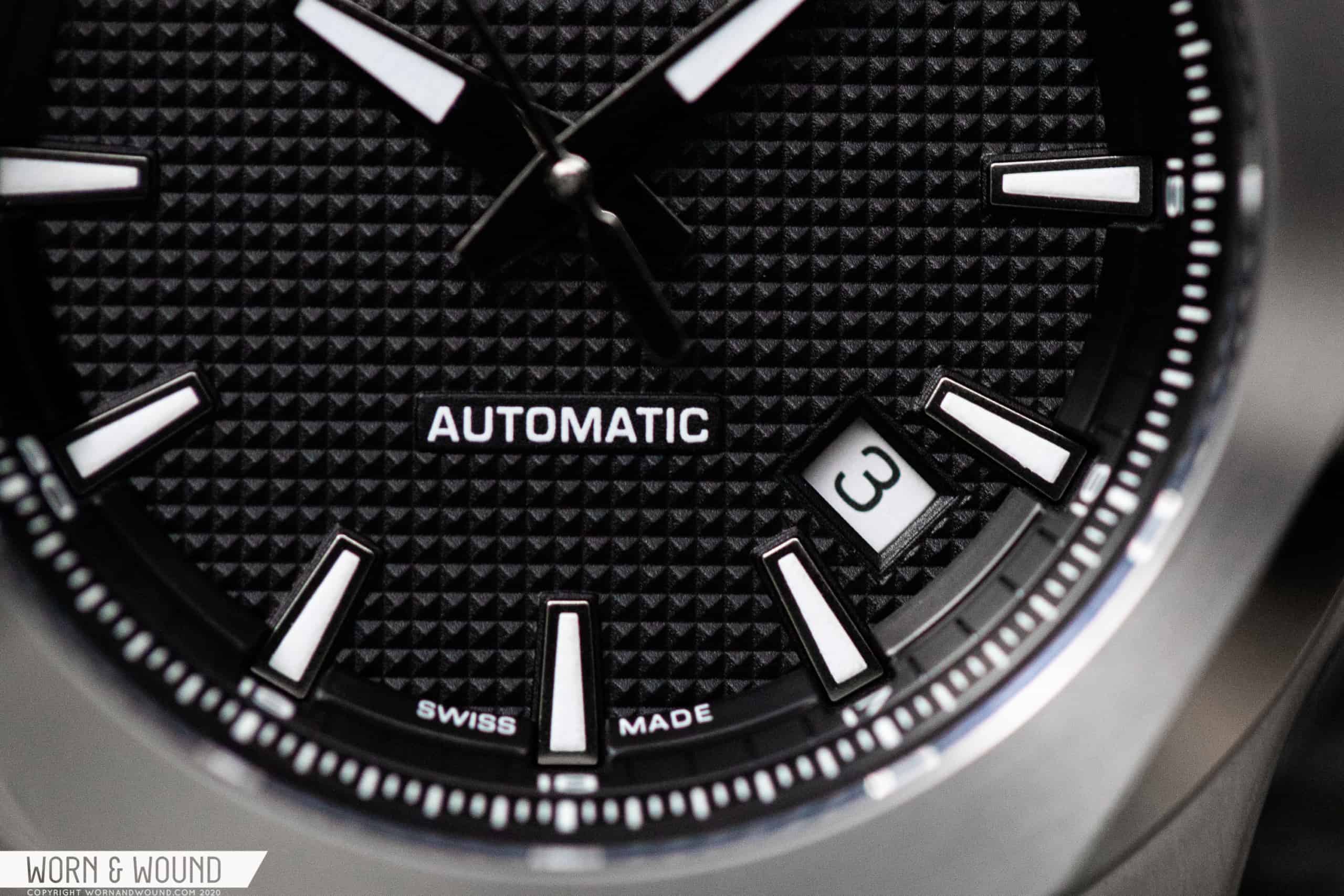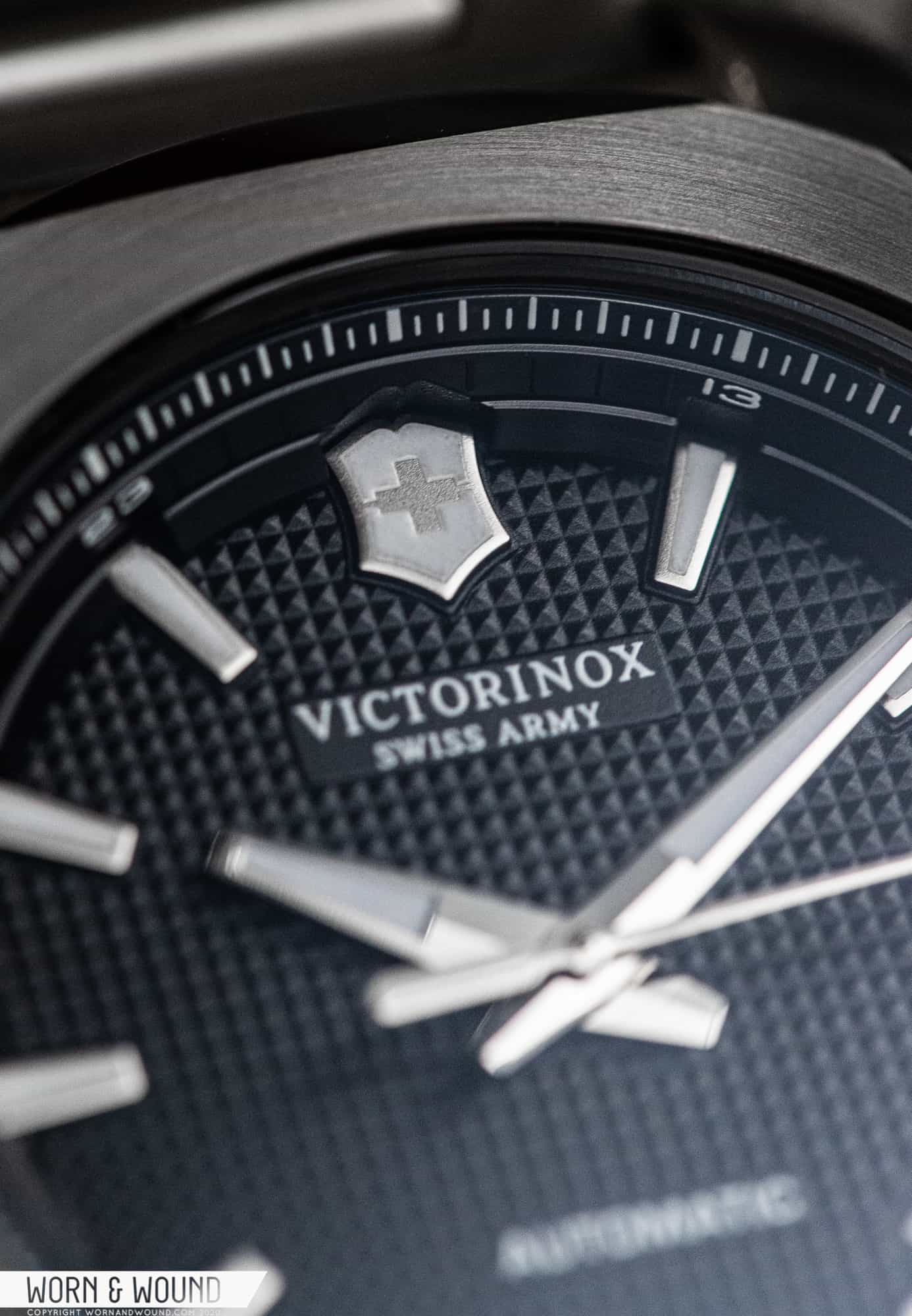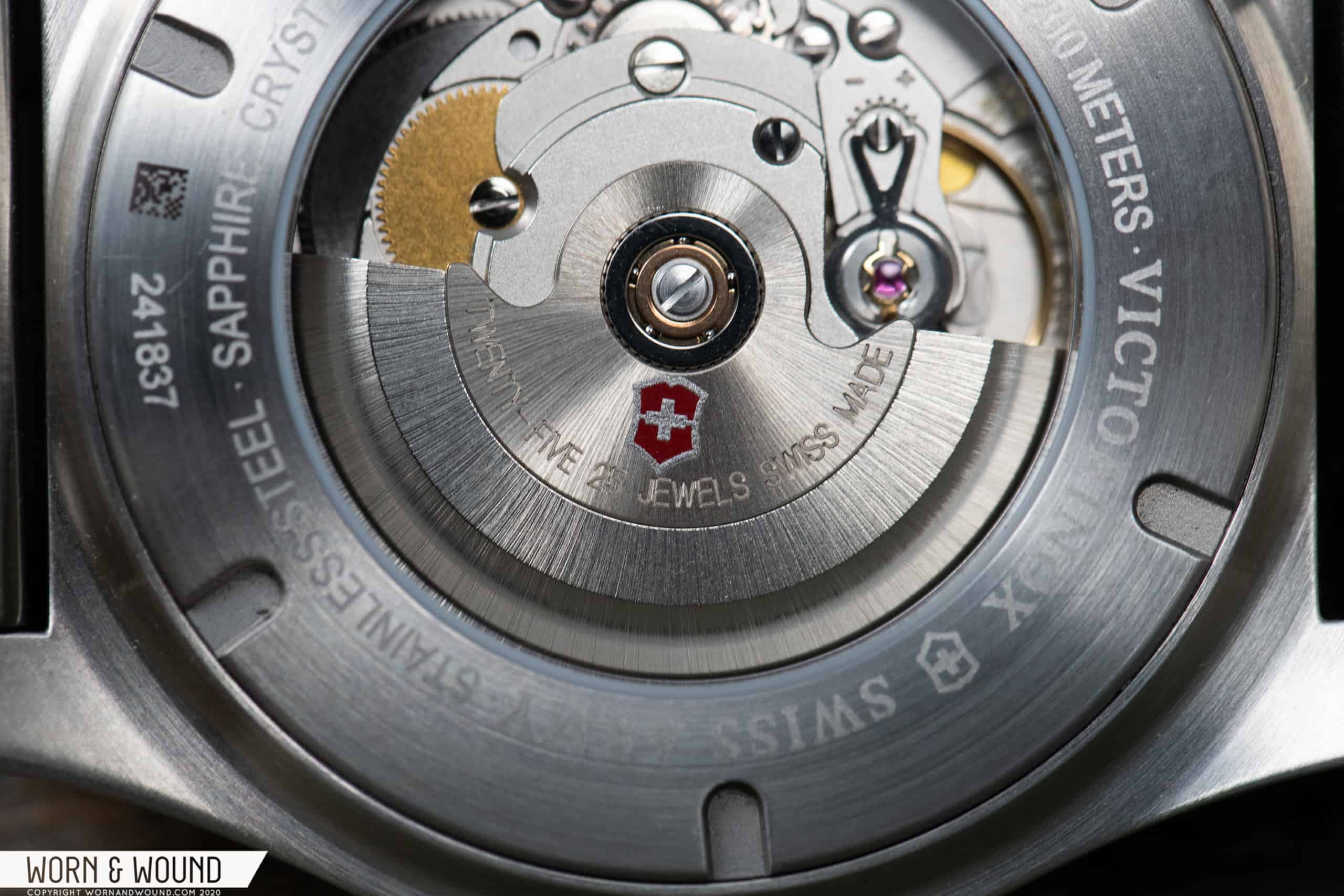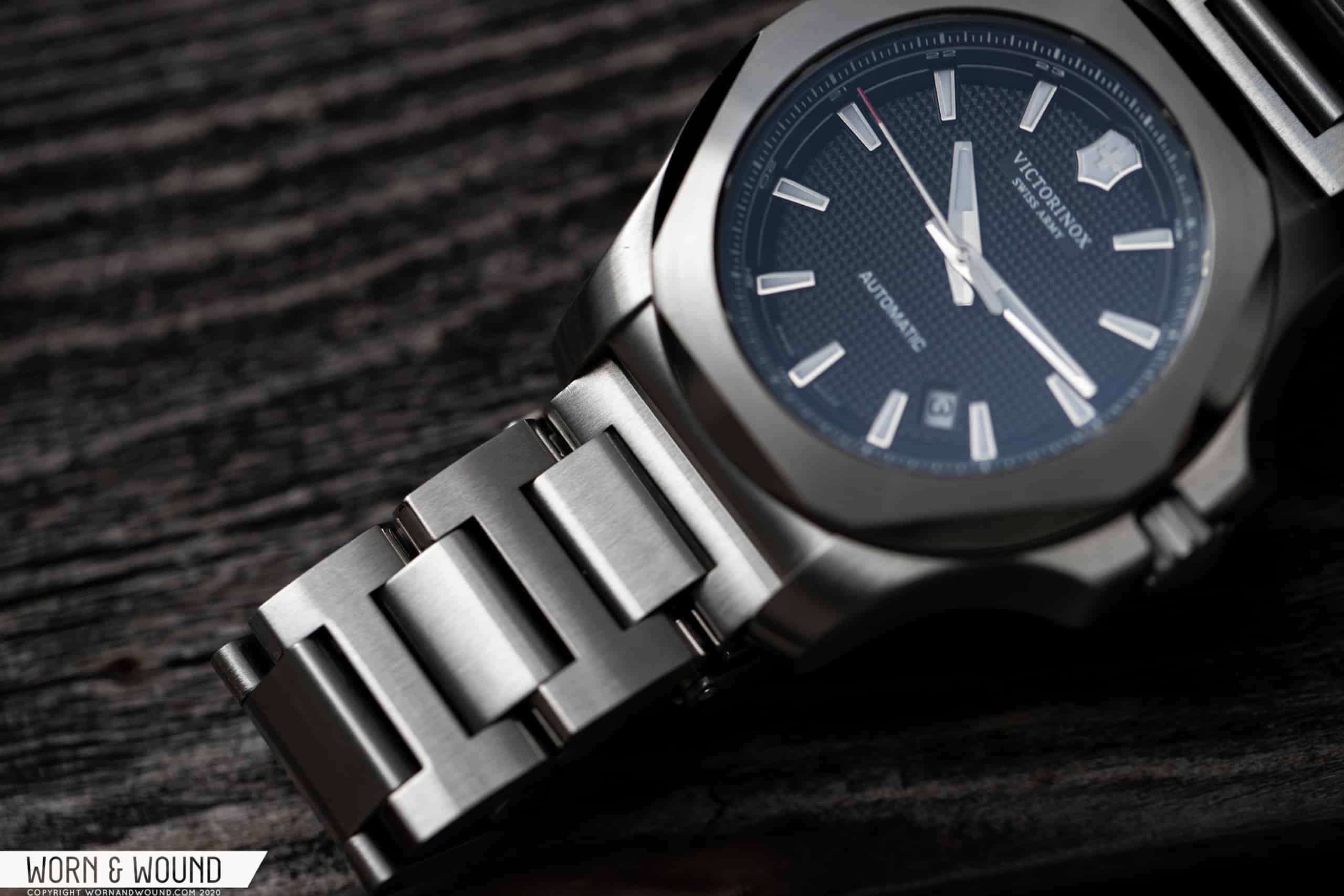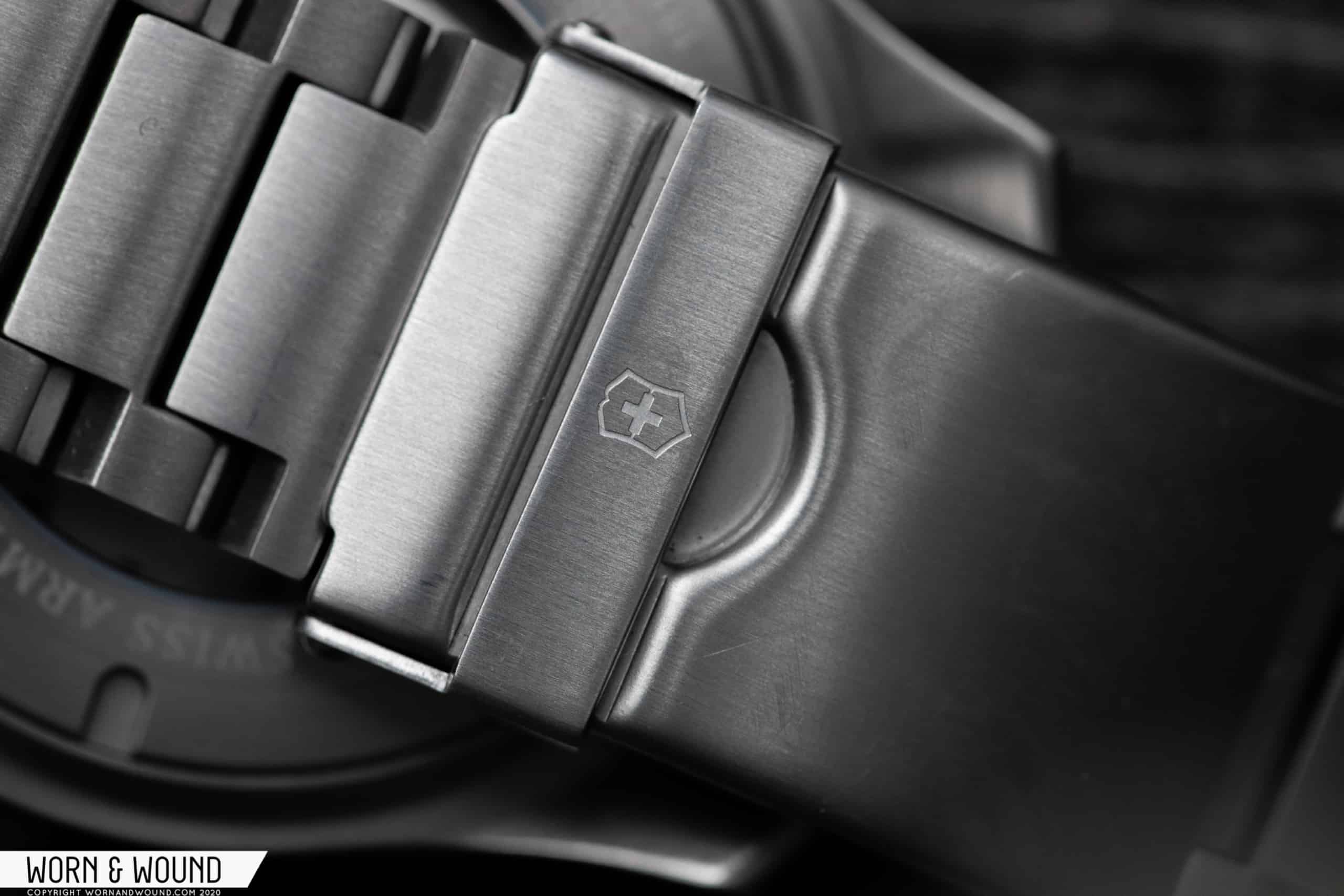While the end links on the I.N.O.X. are “solid,” they aren’t fitted to the case. At first this does feel somewhat chintzy, at least compared to the watch head, which is anything but. Wearing and handling the watch, however, it’s clear that this method of attaching the bracelet to the watch at the lugs allows for a much more comfortable drape, and likely shaves a few precious ounces off the total weight of the watch. This watch doesn’t disappear on the wrist, and I wouldn’t even describe it as “comfortable” in a traditional sense, but to the extent that you can wear this watch day in and day out, I think you have the bracelet to thank.
Conclusion
The I.N.O.X. is a little bit of a confusing proposition. It’s very well made – for a mechanical watch under $1000, it’s top notch in terms of conveying a sense of overall quality when you handle and look at it. But a lot of the reason for that perception of quality has to do with the watch’s weight (heavier things always seem more expensive and better made, whether or not they actually are – it’s a trick that has been used not just in watches but innumerable other product categories over the years). So the very thing that makes us feel we’re holding a high quality object is also that which makes it a tough wear to some.
This is a common enough problem within the Giant Hunk of Metal watch category. Like any other highly specific type of watch, it’s not going to appeal to everyone. But if you’re a fan of the genre and enjoy the aesthetic, the I.N.O.X. could easily slide into your rotation, and stand up next to your Monster or PLOPROF.
![]()
Of course, if you just need an extremely solid beater, and are ok with a quartz movement, the original I.N.O.X. can be run over by a tank and is available on cool paracord straps, and in my mind makes more sense on paper as a watch that can actually be used without fatigue setting in. That timepiece is untested by me, but features the same case design, with a greater variety of dial options.
For someone who tends to wear and prefer watches of more modest proportions, having the I.N.O.X. on wrist for a short period of time was a fun reminder of the huge world of watches that we have available to us as enthusiasts. I likely never would have thought to pick up the I.N.O.X. and test it out as a consumer, but wearing it for a bit got me thinking about the qualities we look for in a watch in a way that I hadn’t in quite some time. Victorinox
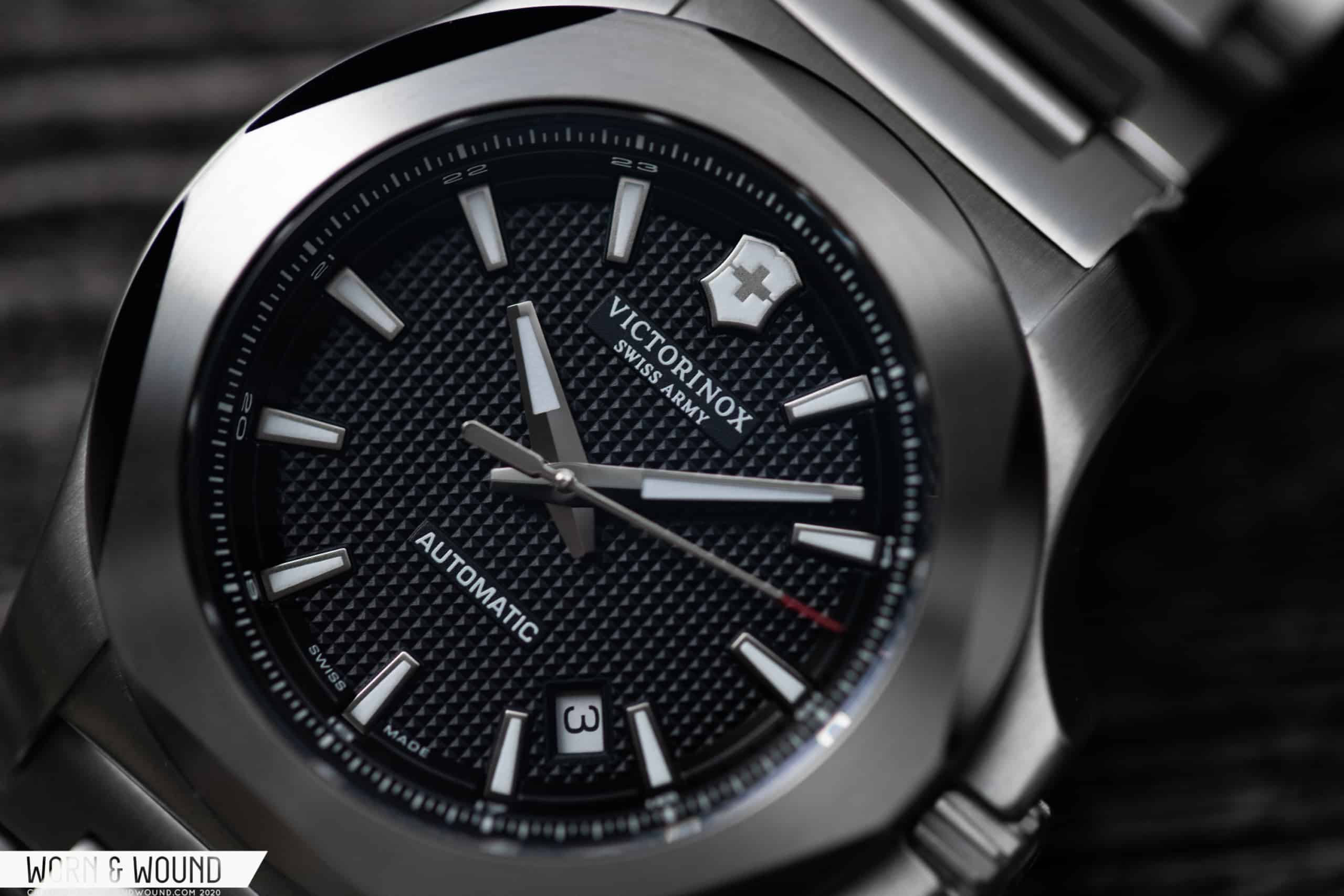









 Featured Videos
Featured Videos




